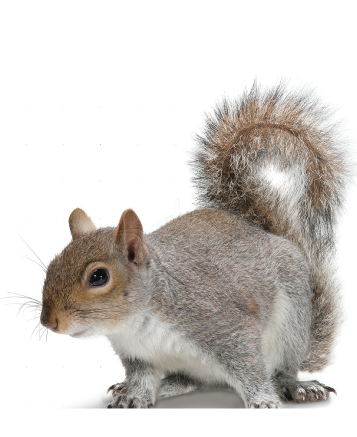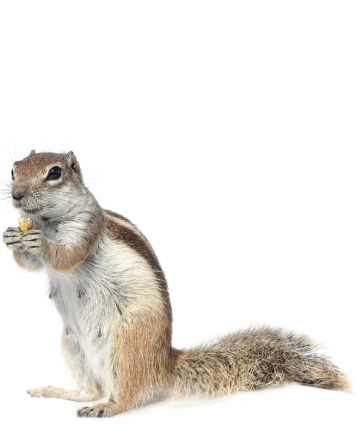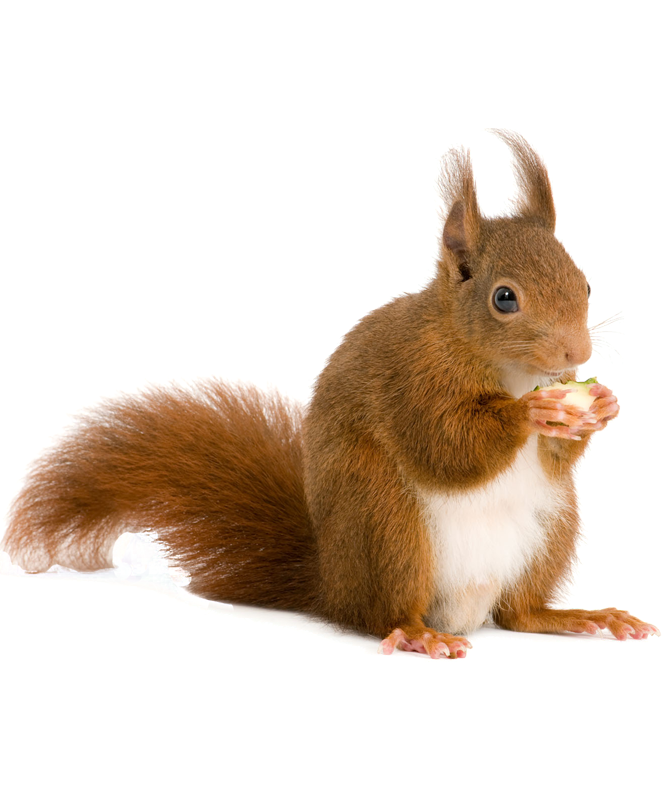
Squirrels
Squirrels are agile, populous and live high in treetops, making them a challenge to manage - especially outdoors. By adopting an integrated approach to control and being persistent, you can prevent damage and keep these nuisance animals at bay.
How to Get Rid Of
Remove Attractants
Allowing food sources and debris to accumulate in your yard is like inviting squirrels down for a snack. Maintain the cleanliness of your yard to avoid attracting these nearby tree-dwellers.
- Rake up fallen berries, nuts, acorns, fruits and birdseed.
- Clean up any leftover food, drinks or pet food.
- Remove trash and secure garbage bins.
- Remove bird feeders, or replace your birdseed with a type that squirrels dislike, like safflower or nyger.
Limit Accessibility
Once a squirrel makes its nest on your property, it’s very difficult to force it to relocate. You can reduce or prevent damage significantly by taking steps to limit a squirrel’s ability to invade your home and/or bird feeders.
- Squirrels can leap across a distance of 10 feet; trim any tree limbs that come within this distance of your house or feeders.
- Cover nearby electrical or telephone wires with plastic tubing (on which squirrels cannot balance), to limit access to your roof.
- Use a chimney guard and close/repair all holes that may lead inside your house.
- Switch to squirrel-proof bird feeders, or add a squirrel baffle to your current feeder.
Identify Squirrel Activity
It's important to identify the nature and location of your squirrel damage as well as their travel paths, so that you can select the best control method.
Destructive squirrel habits include:
- Excavating bulbs and seeds
- Stealing fruits and berries
- Pilfering bird seed from feeders
- Gnawing through wood siding
- Girdling trees
- Digging small holes in your lawn to collect and hoard food
Squirrel Sounds

Squirrel
Squirrel Footprints
How to Identify a Squirrel Problem
It’s easy to identify a squirrel when you see the bushy tail, small paws, short legs and long fur, but it can be harder to determine the type of squirrel. Ground squirrels include Belding squirrels, California squirrels, Rock squirrels, Richardson squirrels, Townsend squirrels, Washington squirrels and Columbian squirrels.
Expert Advices
Squirrels can cause significant structural damage to buildings. It's important to take preventative measures to limit your home's accessibility. Immediately take action if a squirrel does get inside to avoid a full infestation - one squirrel can give birth to 5 kits every 6 months.
With their strong teeth, squirrels can chew through just about any material. Switch to metal garbage cans as well as rodent-proof storage containers to completely protect pet food and trash from squirrels.
If locked inside a structure, a squirrel will cause a lot of damage by trying to chew its way out. Place a live trap in the room or between the walls where the squirrel is trapped, and close off all entryways. Check your trap often until the squirrel is captured.

Squirrels like to dig up and eat bulbs. When planting bulbs, dip them in repellent and then cover them with a thick layer of sharp mulch that squirrels will not want to dig into. You can also choose flower varieties that squirrels are known to dislike, such as daffodils, hyacinth, and alliums.
The best squirrel repellents repel by taste, causing a strong irritation upon encounter. The most effective are pepper-based taste deterrents that have been proven to work.
Repellents should be applied at the very first signs of squirrel activity to prevent them from establishing any patterns or habits in your yard.
Utilizing multiple squirrel control solutions will result in the most effective defense.




